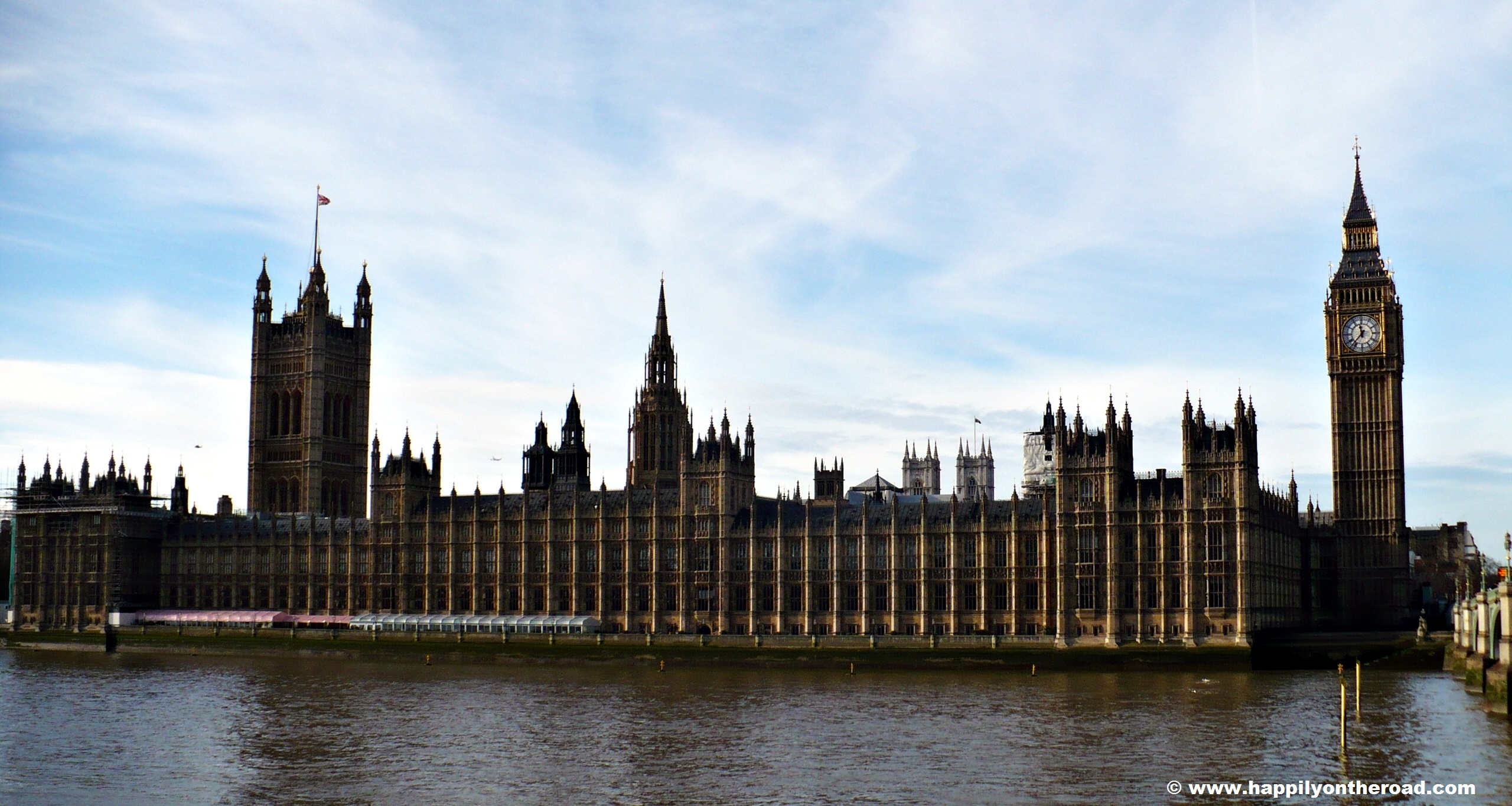
London, Houses of Parliament
As you read in the previous post, my first trip to London was quite short. While planning the trip, I tried hard to plan every single detail, in order to see as many places as possible. Apart from the days of arrival and departure, I had just 2 days to visit London. There are so many things to do in London that a few days aren’t enough at all to visit it.
Considering the tight time, this is how I planned my trip: it is an almost completely walking itinerary. A positive aspect of London is that the majority of its attractions are quite close to each other and this makes things easier for a traveller who intends to visit the city on foot. Then, let’s say it, London public transport isn’t very cheap, so avoiding it as much as possible is of benefit for your wallet. By the way, this is the itinerary I followed to visit London in two days:
Day 1: historical London
As stated in the previous post, I staid in a hotel in Shepherd’s Bush. It’s a quiet and nice area in London, at just 20 minutes walk from Notting Hill; here you can also find Westfield London, one of the biggest malls in Europe.
As I had done the day before at my arrival, I decided not to reach the city center by underground, but by bus 148. having my suitcase, the day before I didn’t go upstairs in the double-decker bus, so I was craving to do that and see London from another height.
It was sunny and I have to say that I saw little rain, although it was January. But let’s go back to us. In about twenty minutes, maybe a bit more because of the traffic, I came close to Victoria Station, a bus stop behind Buckingham Palace. Actually, bus 148 would have continued its own way to Westminster, but I had decided that the residence of Queen Elizabeth should have been my first stop.
Buckingham Palace

Buckingham Palace
What a thrill to be in front of the world’s most famous royal palace! I was in front of its gates crowded by tourists, even though it was just 10 am. Looking through them, I could see the royal guards wearing their red jackets and black busbies. It would have been nice to watch the guard change at 11:15, but in winter it only takes place on alternate days and unfortunately that day was not scheduled.
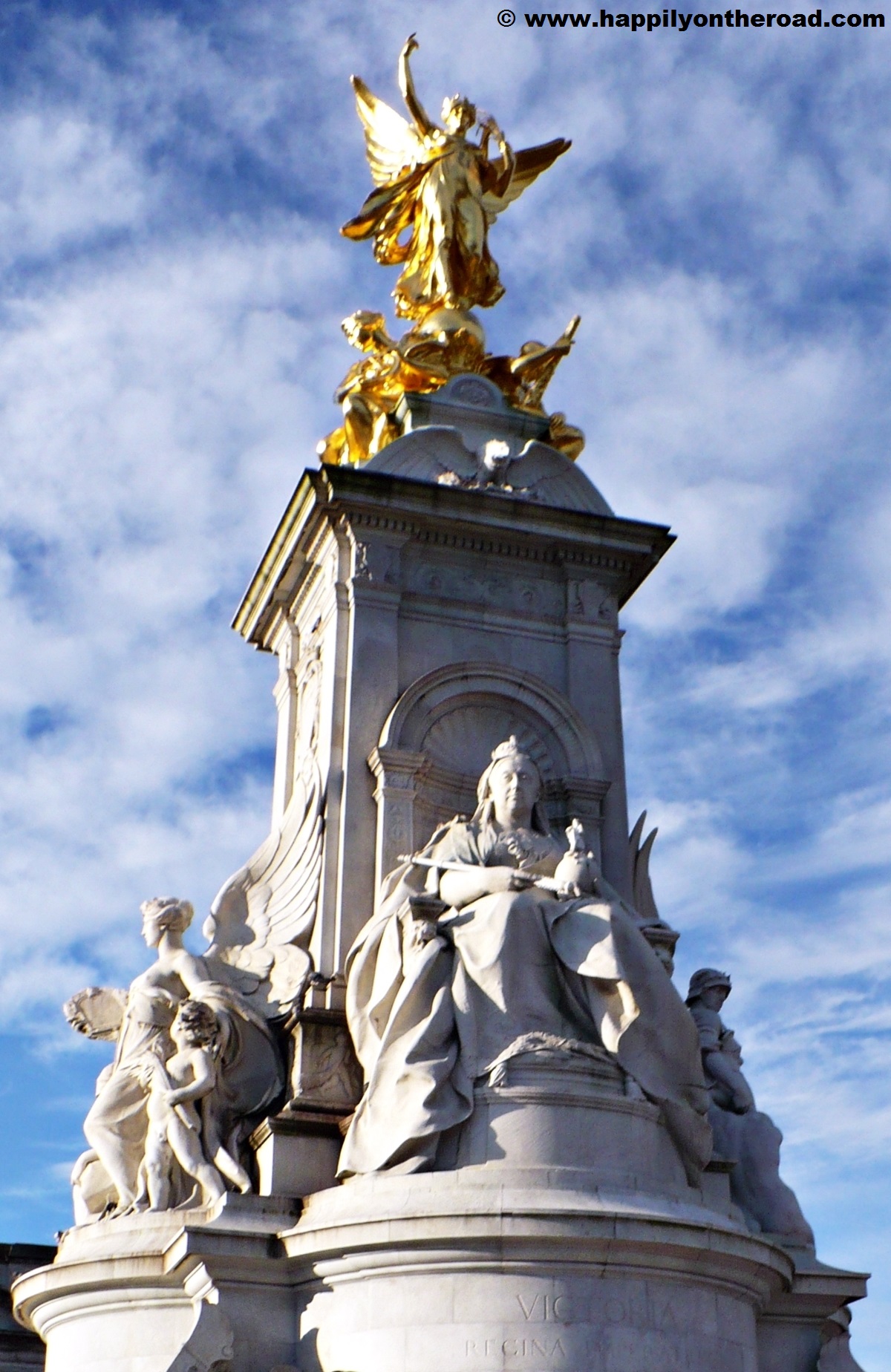
Queen Victoria Memorial
In the central part of Buckingham Palace‘s facade you can see the famous balcony, from which the British Royal Family shows on certain occasions. The impressive facade of the palace overlooks a large open-air public square, in the center of which you can find the memorial dedicated to Queen Victoria, the sovereign who has ruled for more time in the history of the British Monarchy. Queen Victoria is surrounded by some allegorical figures representing Victory, Perseverance, Truth, Courage, Justice, Science, Art and Agriculture.
The Mall and St. James’s Park
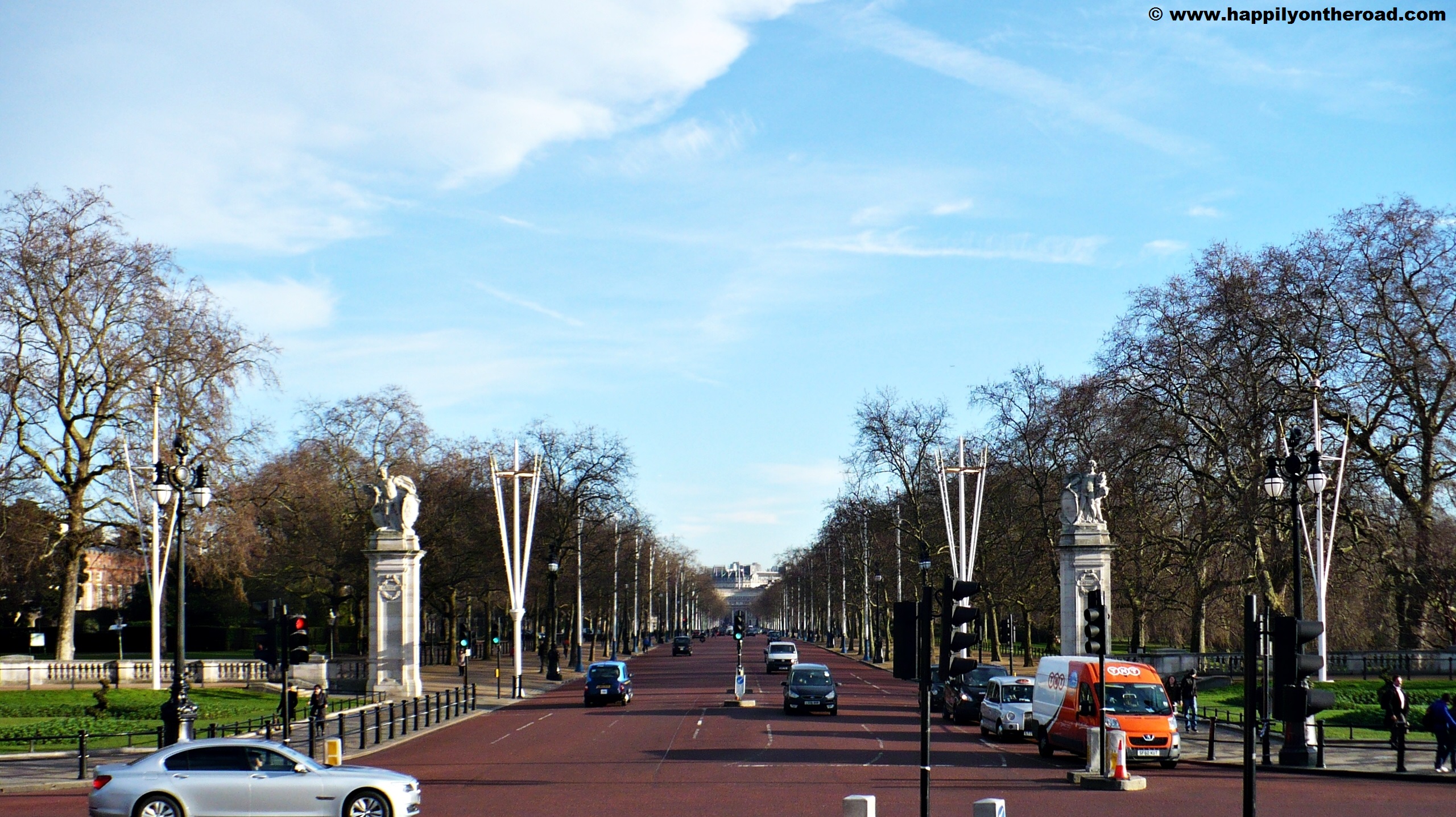
The Mall
Just in front of Buckingham Palace, you can find a long boulevard , called The Mall, which ends with the Admiralty Arch, access door to Trafalgar Square. Walking in direction Trafalgar Square, you can find some royal residencies on the left side, such as Clarence House; on the right side you can see St. James’s Park, one of my favourite parks in London. Compared to other London parks, first of all Hyde Park, St. James’s Park is much smaller. It has a pond, in the middle of which there’s a wooden bridge. From there you can admire a view of Buckingham Palace, which is also one of the most photographed views of London.
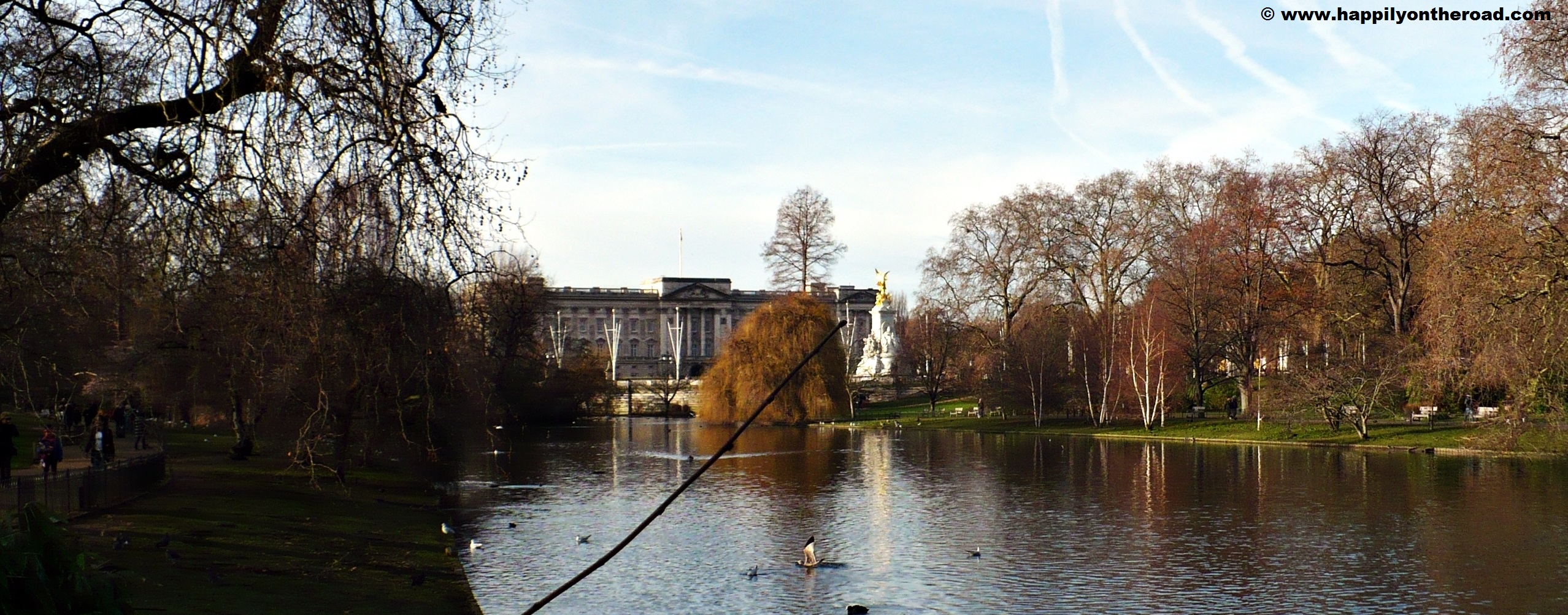
Buckingham Palace seen from St. James’s Park
In addition to this, in St. James’s Park you can meet pretty squirrels and admire so many species of water birds.
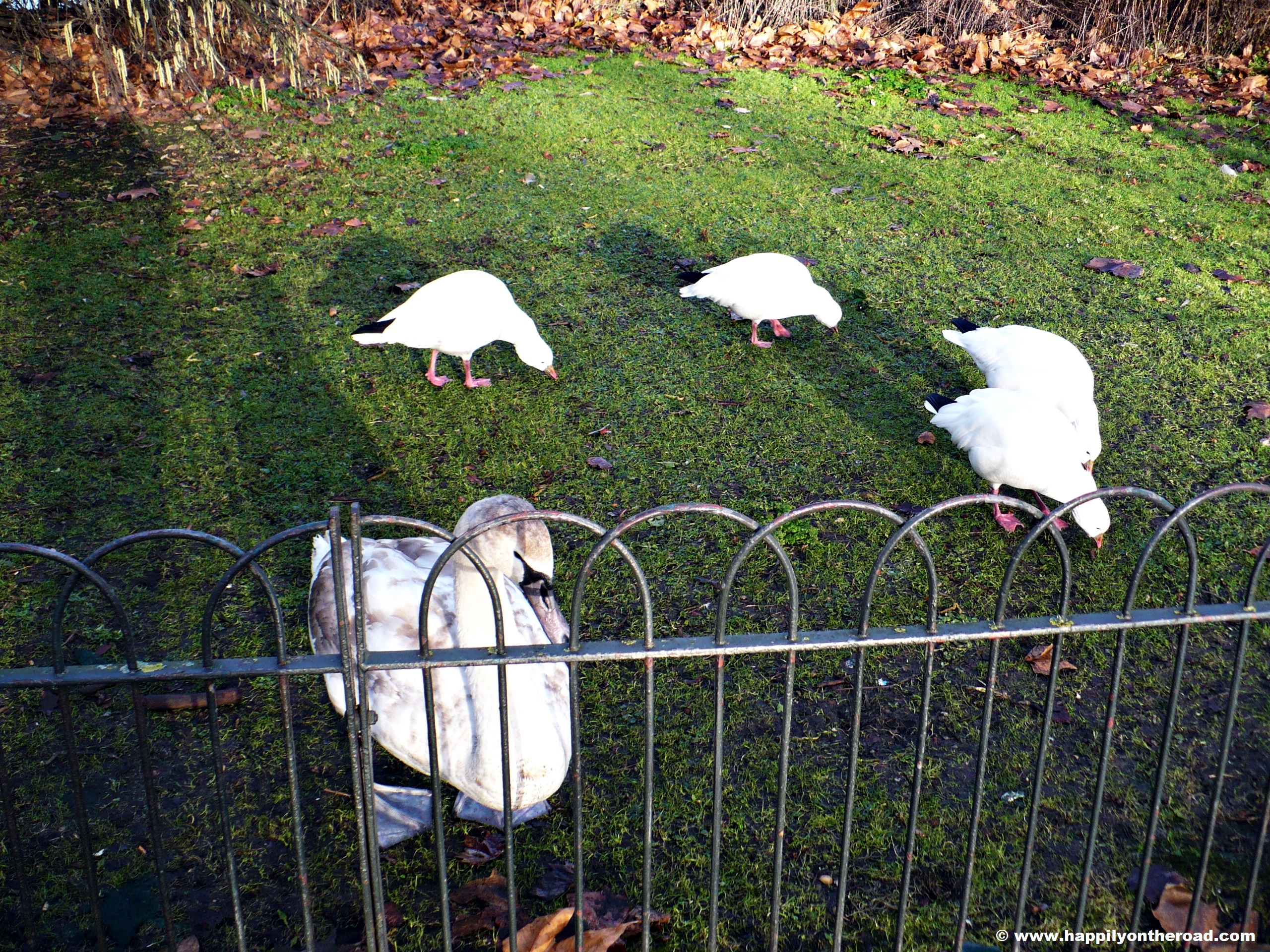
Geese in St. James’s Park
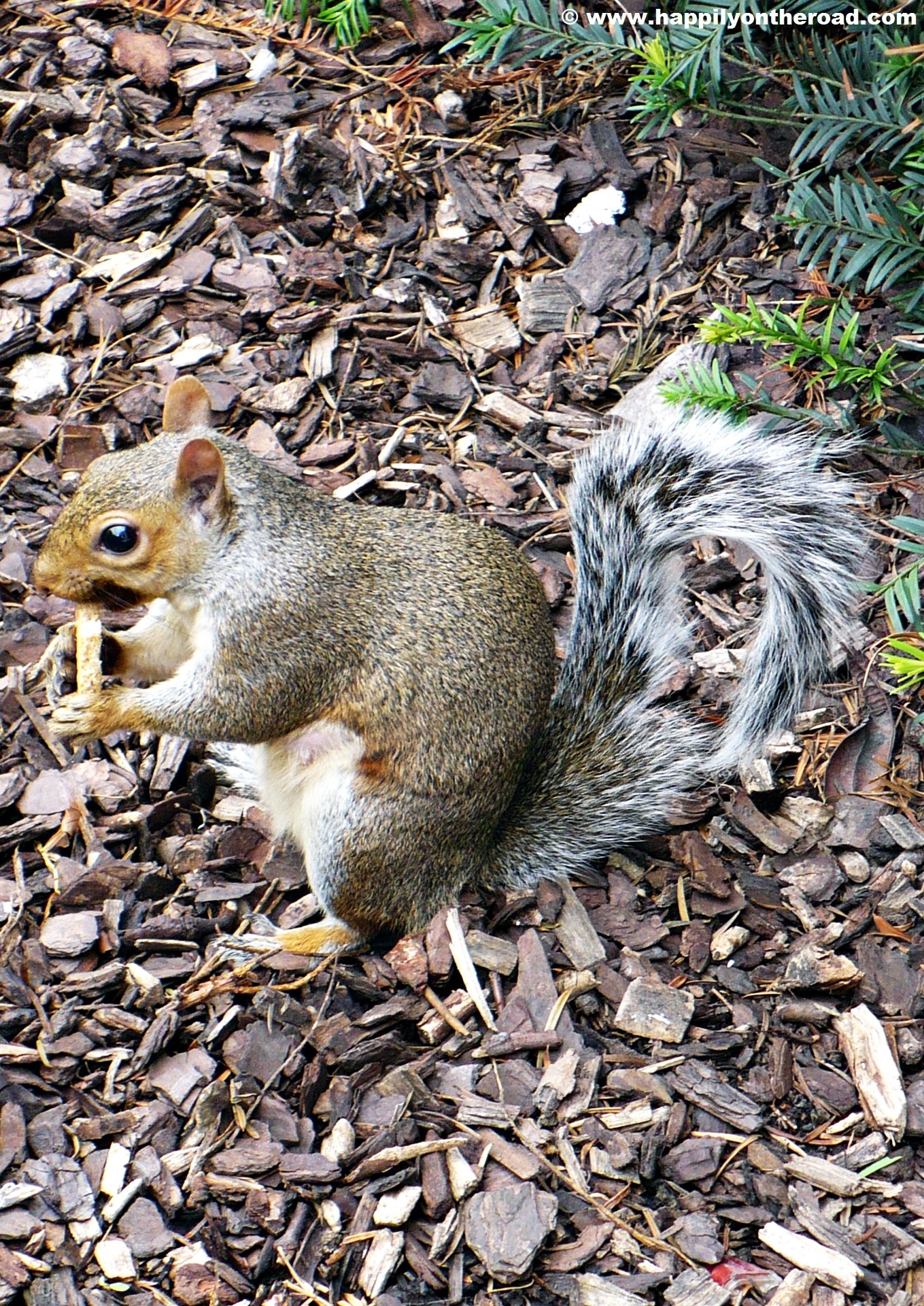
Squirrel in St. James’s Park
Westminster: il Parlamento, l’Abbazia di Westminster e il London Eye
Crossed St. James’s Park (due to its small size, just a few minutes walk) and continuing on the right along Great George Street, you reach Parliament Square. The very first thing you can see even before getting to the square is the impressive Big Ben Tower (or Elizabeth Tower; that’s its real name, even though many people don’t know it), the word’s most famous clock tower. Nowadays it’s the undisputed symbol of London. As soon as I got at its feet, the bells started striking 11 am, as if the Big Ben wanted to welcome me.
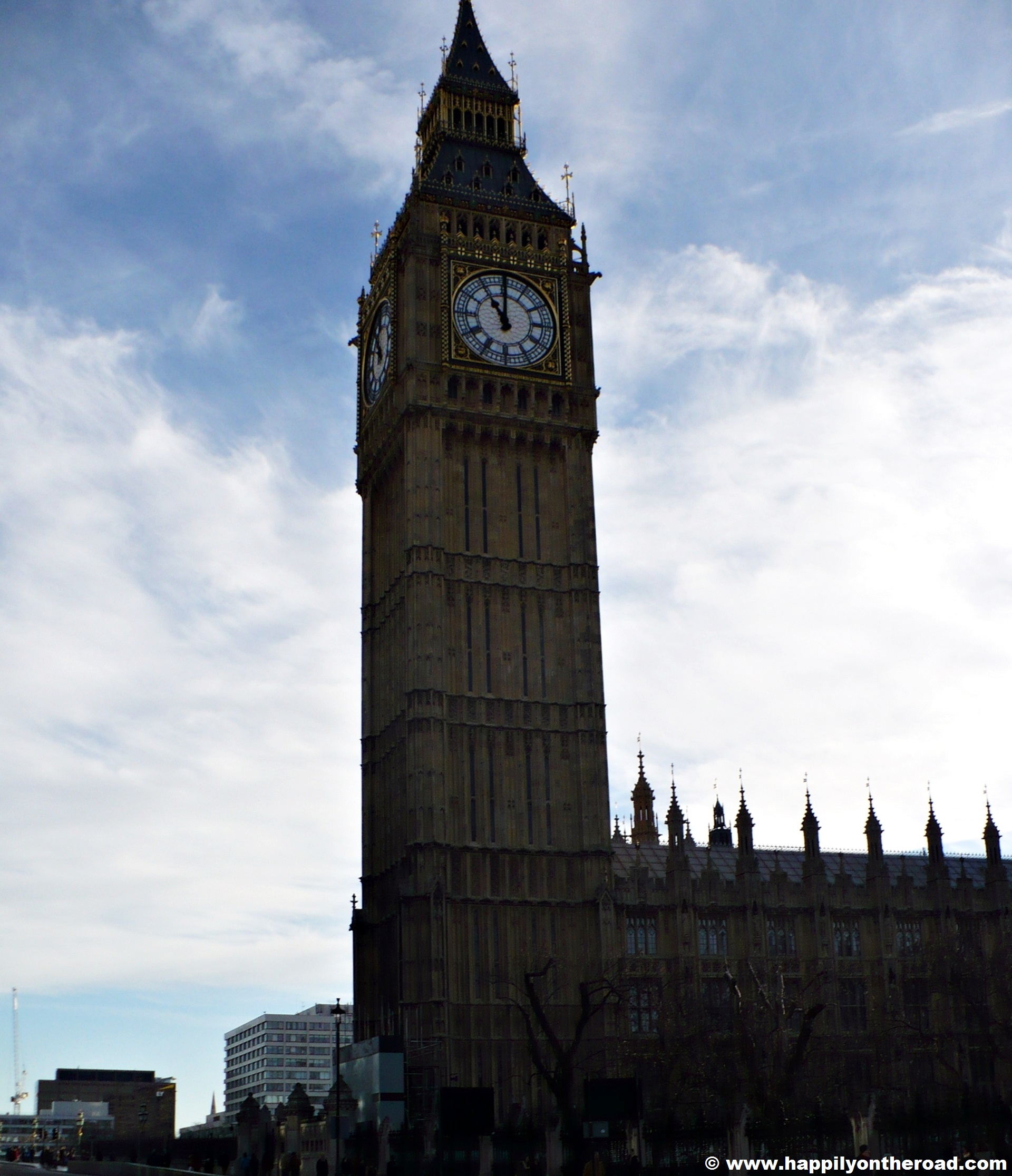
Big Ben Tower
Wandering around Parilament Square, you can see the majestic building of the Houses of Parliament, headquarters of the British Parliament, the statue of Winston Churchill and the equestrian one of Richard I the Lionheart; on the opposite side, Westminster Abbey, where all British monarchs have been crowned since 1066 (the first king was William The Conqueror).
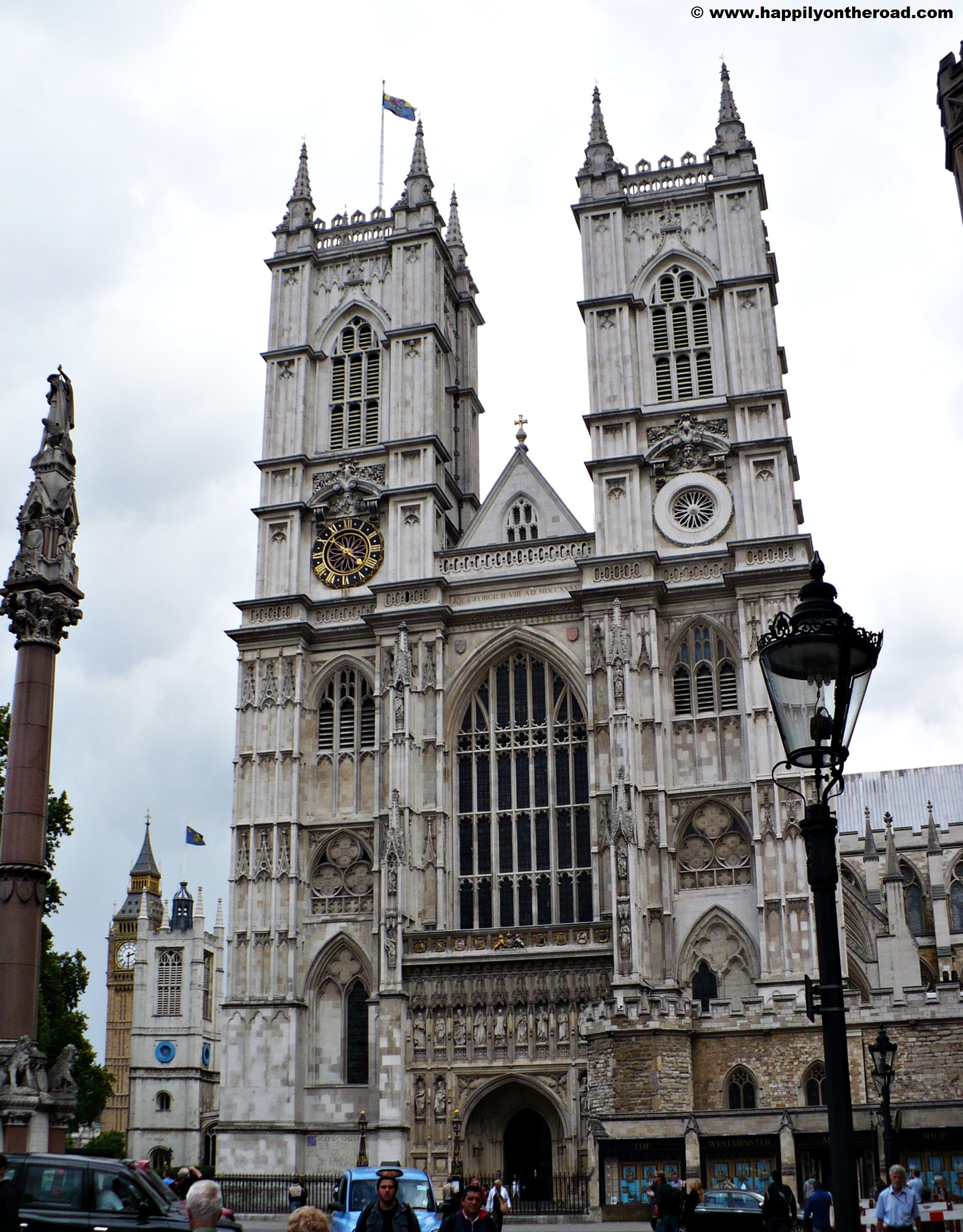
Westminster Abbey
Inside, all in Gothic style, you can admire the tombs of some British sovereigns who reigned until 1760 and some illustrious artists and people in British history, including Geoffrey Chaucer, father of English literature.
Walking towards the river Thames, you can stop and stare the Big Ben Tower before crossing Westminster Bridge. From the bridge, you can admire the Houses of Parliament on one side, the London Eye and London Aquarius behind the wheel on the other.
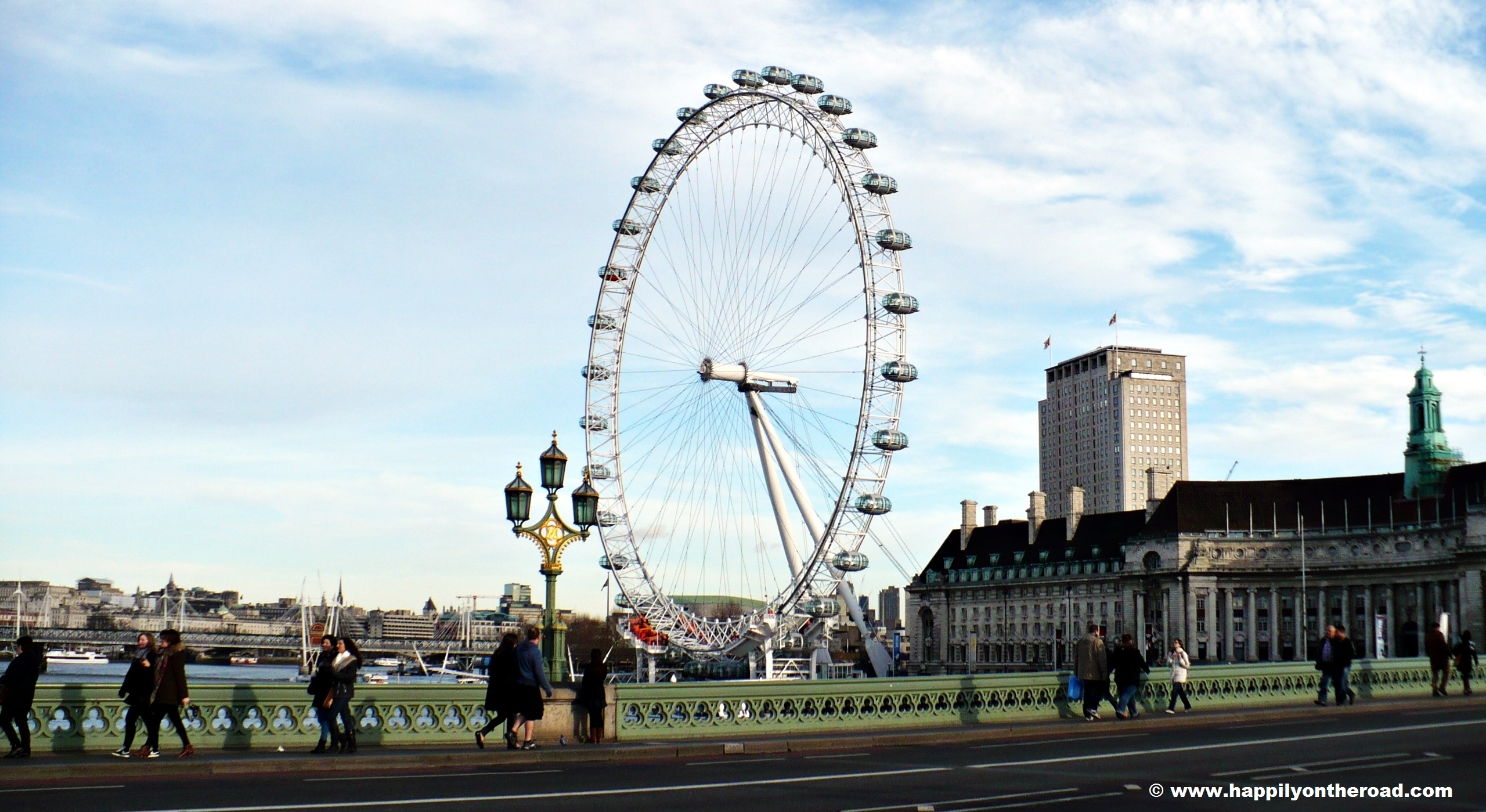
The London Eye

Big Ben Tower and Westminster Bridge
After having crossed the river and taken some pics, I went to the London Eye, the famous London Ferris wheel. Unfortunately, on that occasion I could only watch it from the bottom: in fact, every year in the first two weeks of January, the London Eye is closed for the usual annual maintenance. So, if you visit London in those weeks, you’ll be as disappointed as me. Then luckily I could make up for it on a subsequent trip and would highly recommend trying the wheel at least once, because during the 45-minute ride you can see London from above and beyond in the days of clear sky.
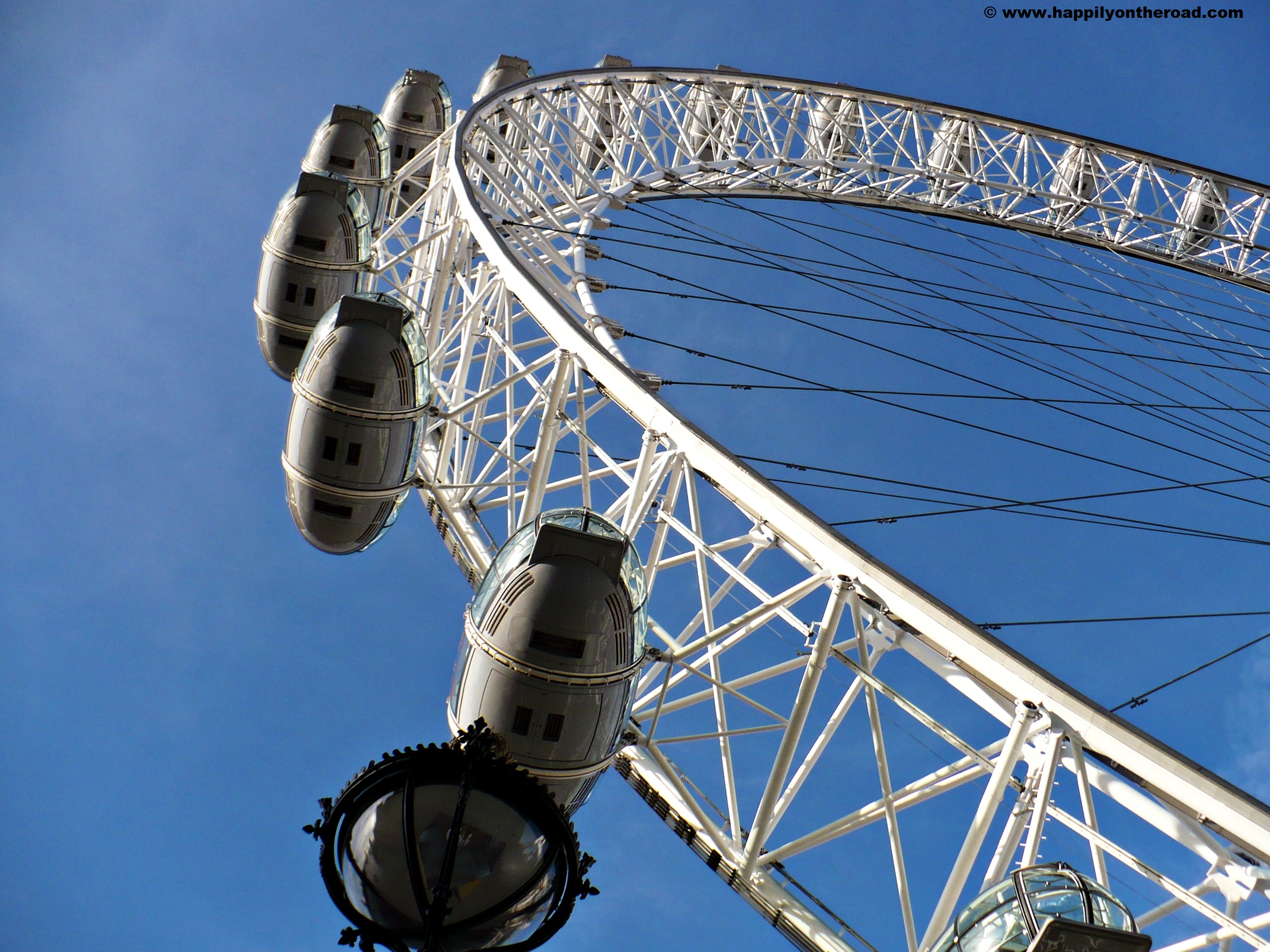
At the feet of the London Eye
Thames river cruise
After having lunch in the nearby of the London Eye, I bought a ticket for a river cruise on the Thames. While planning the trip, I decided to cover the Tower of London area on the first day. I could have reached it by underground, but I had a strong desire to see as many things as possible. So, what better way to see the city from a different perspective than from the river?
Among the different companies offering this service I chose CityCruises. I could buy a ticket to Greenwich or one to the Tower of London: because of time constrains I chose the second option. I started my cruise on the Thames from the London Eye Pier, the one that is right at the feet of the Ferris wheel.
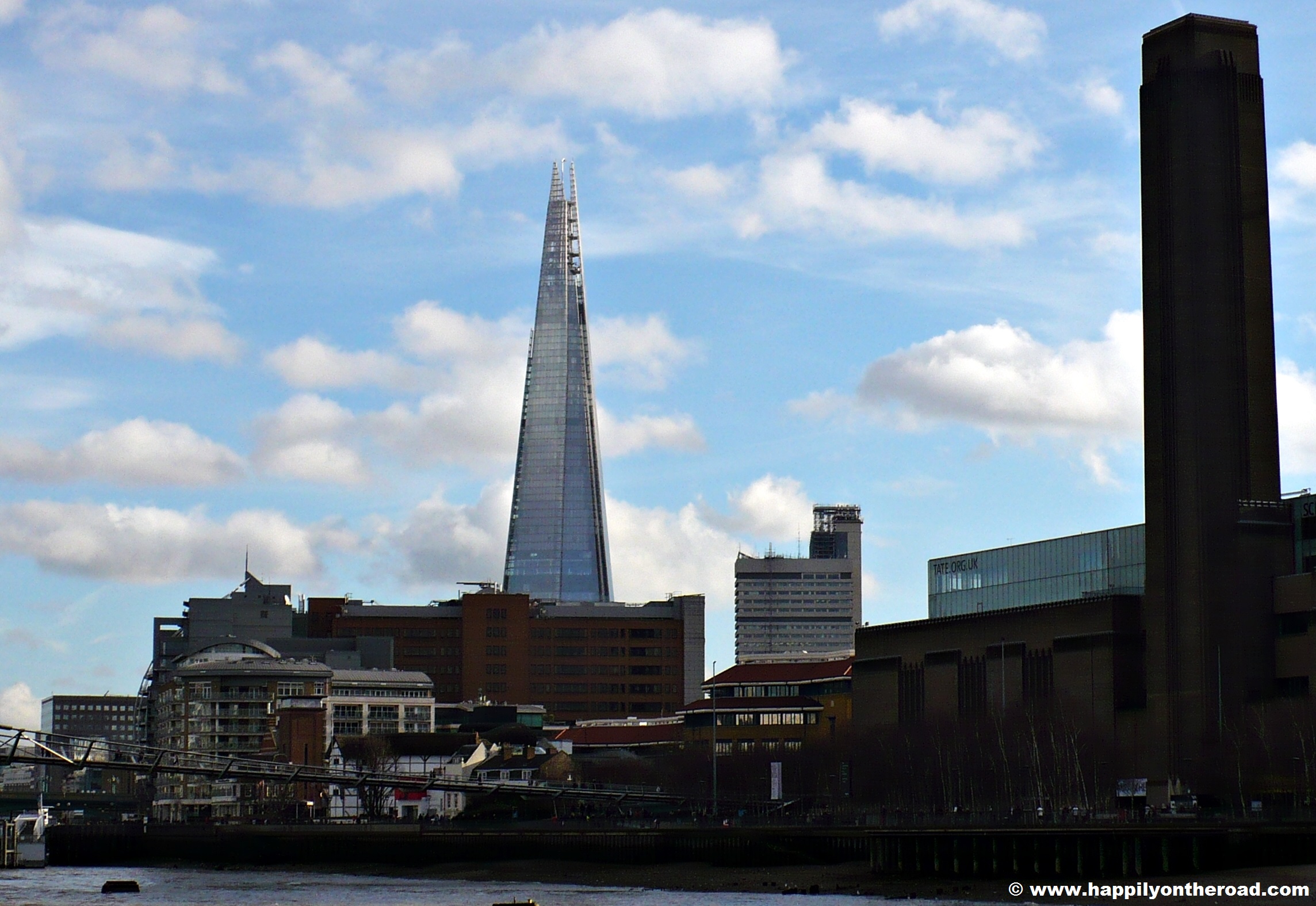
River Thames cruise: Tate Modern, Millennium Bridge, Globe Theatre and the Shard.
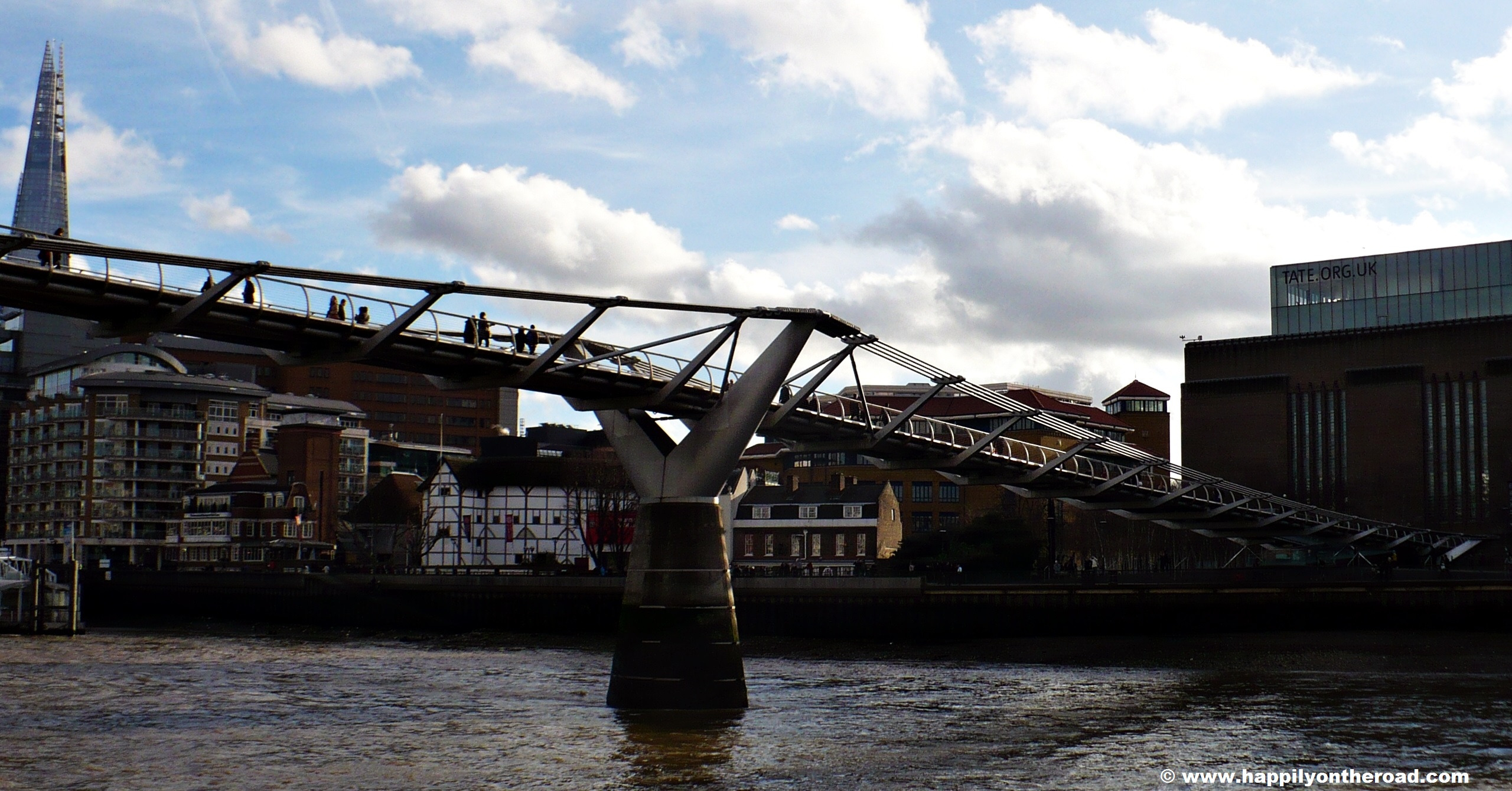
Millennium Bridge
From the river you have the chance to see different London attractions, such as the Royal Festival Hall, the Cleopatra’s Needle, St. Paul’s Cathedral dome, the Millennium Bridge, the Tate Modern, the Globe Theatre, the skyscrapers of the City, among which the Gherkin and the Shard.
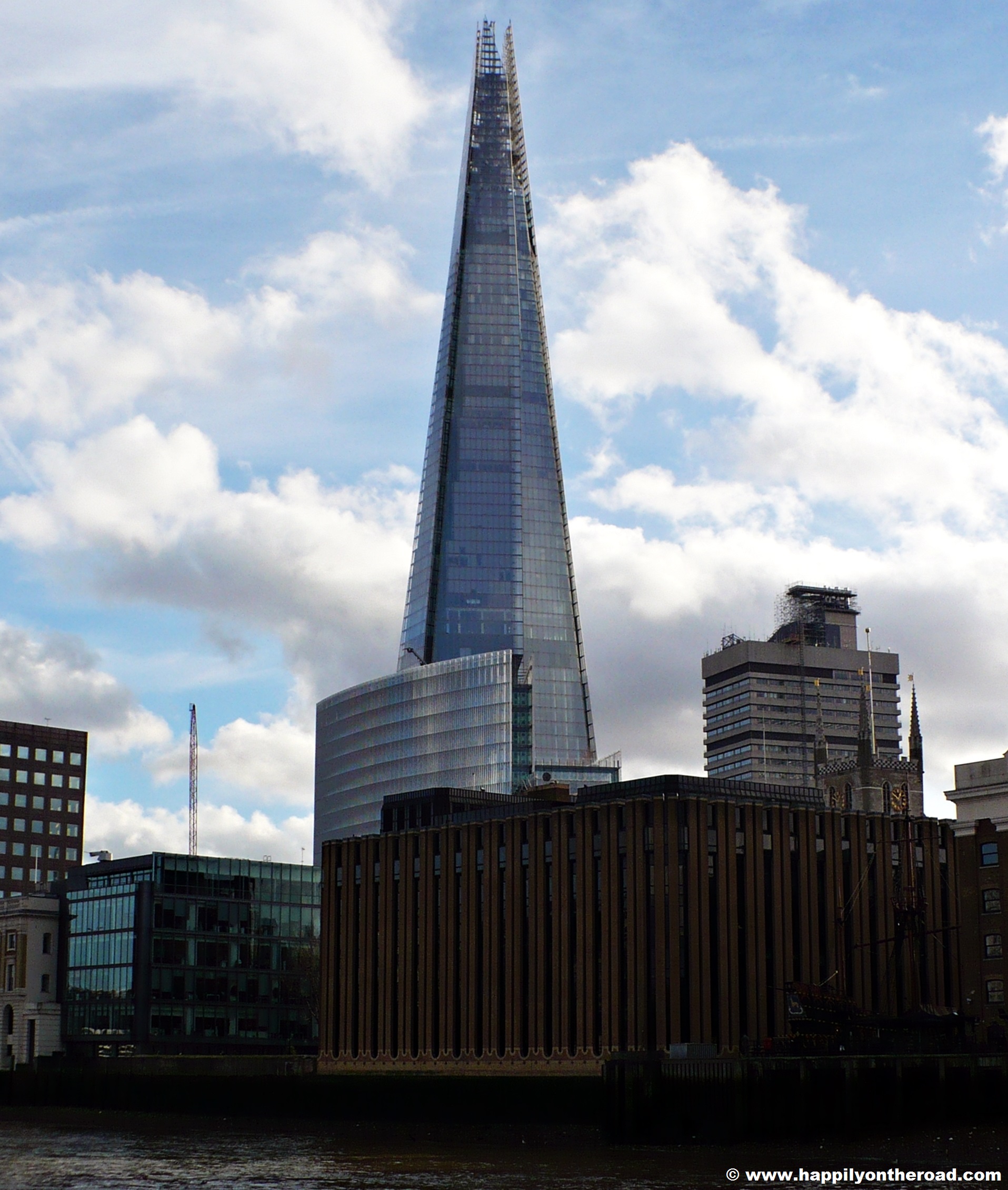
The Shard: the highest skyscraper in London and the third highest in Europe, designed by Renzo Piano
The Tower of London and the Tower Bridge
A cruise on the Thames allows photographers to take some beautiful photos, but one in particular is the one that deserves the price of a boat ticket: the photograph of the Tower Bridge from the center of the river.
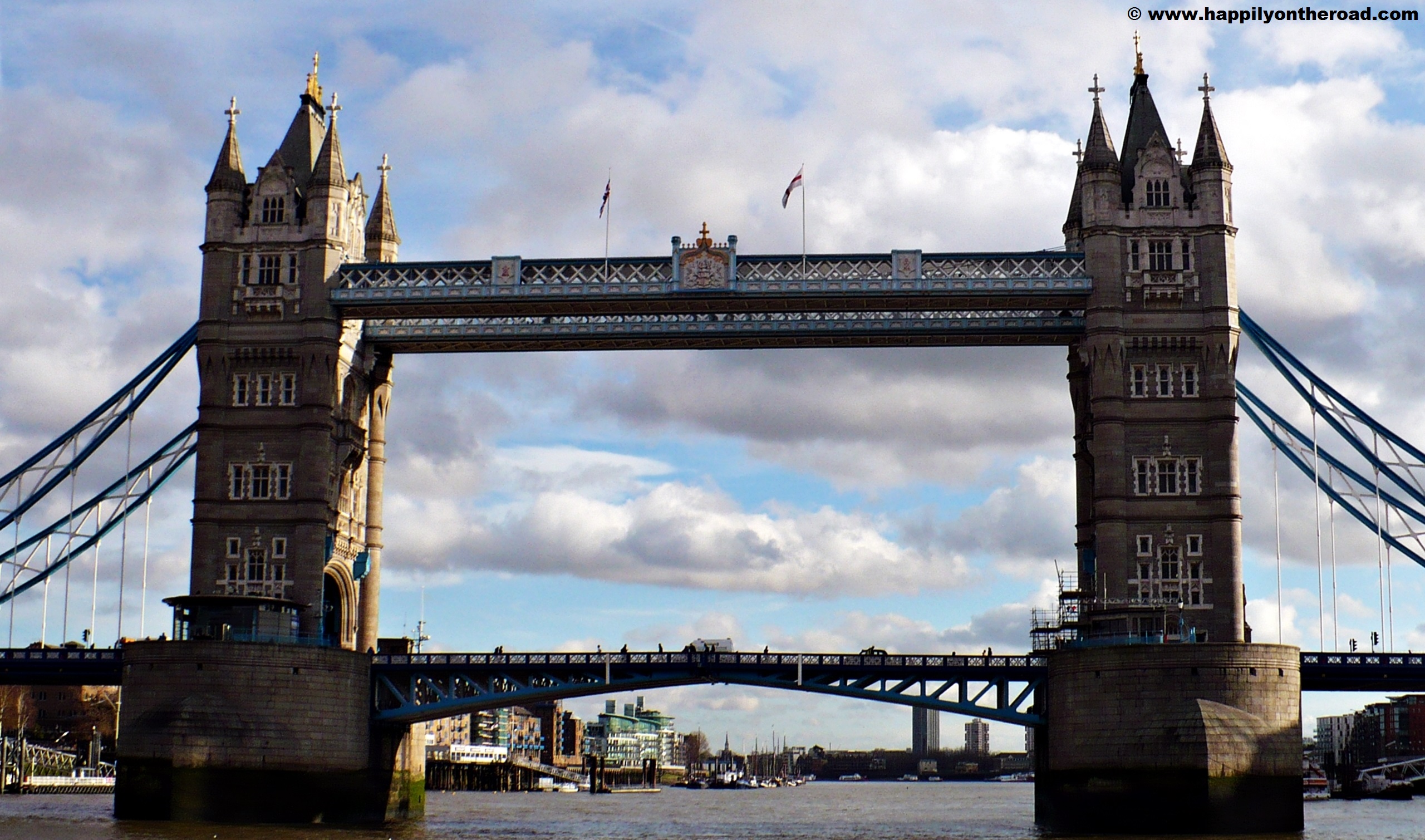
The Tower Bridge seen from the Thames
When I arrived to the Tower of London, I got off the boat, which would have continued its navigation to Greenwich. I walked around the perimeter of the Tower of London, which has changed its intended use several times: it was a royal residence, a fortress and a prison. It would have been great to visit it, but this would have taken me some time. Then, I I crossed the Thames through the most famous of London bridges, the Tower Bridge, one of the symbols of the city.
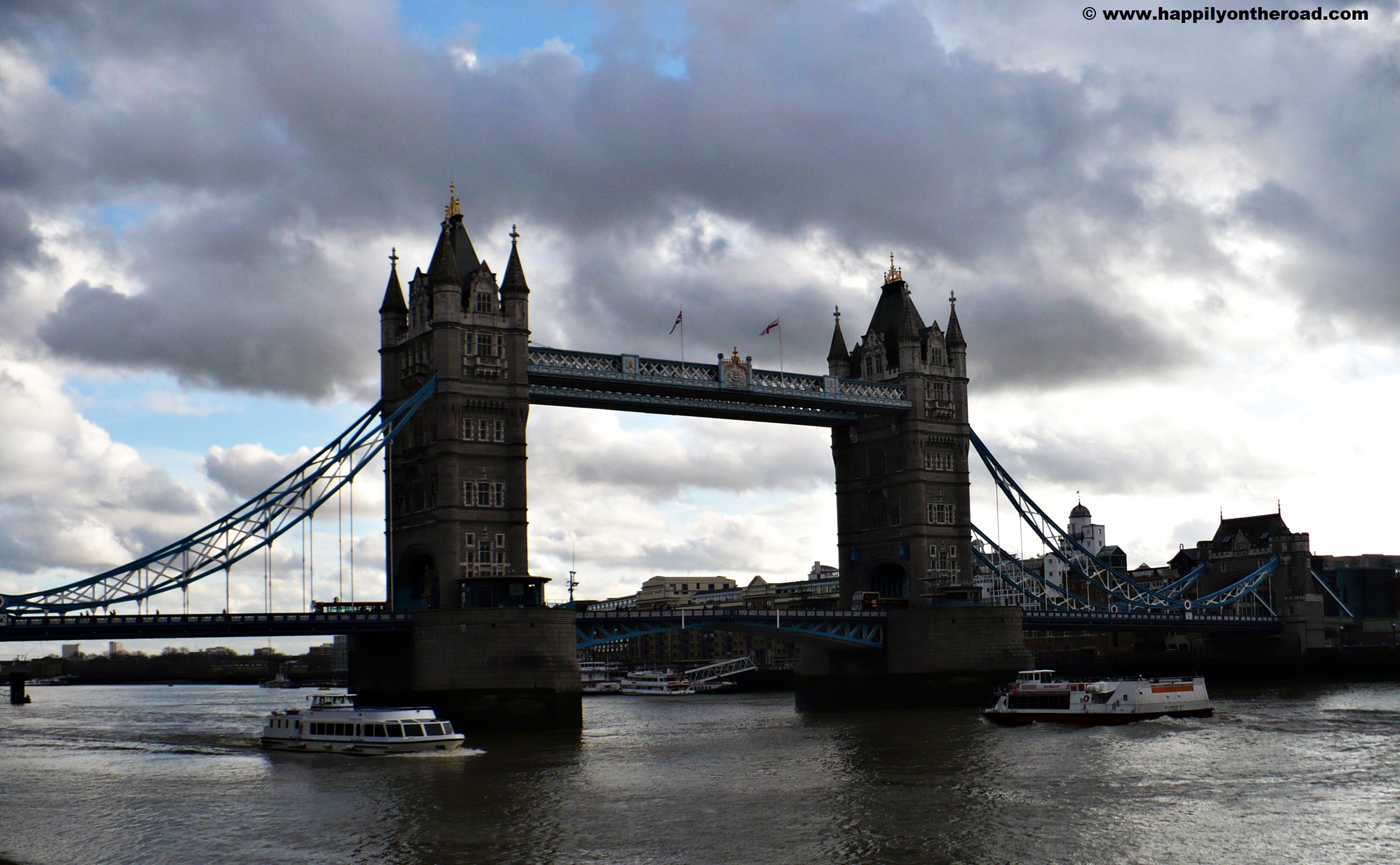
Tower Bridge
From the other bank of the river, you can see one of the most beautiful – in my opinion – sights in London, which is a mixture of modernity and history: the Tower of London and the Tower Bridge and the skyline of the City behind them. I think it is a sight that shows at best the nature of London, a city rich of history and that made history, but that is at the same time projected into the future.
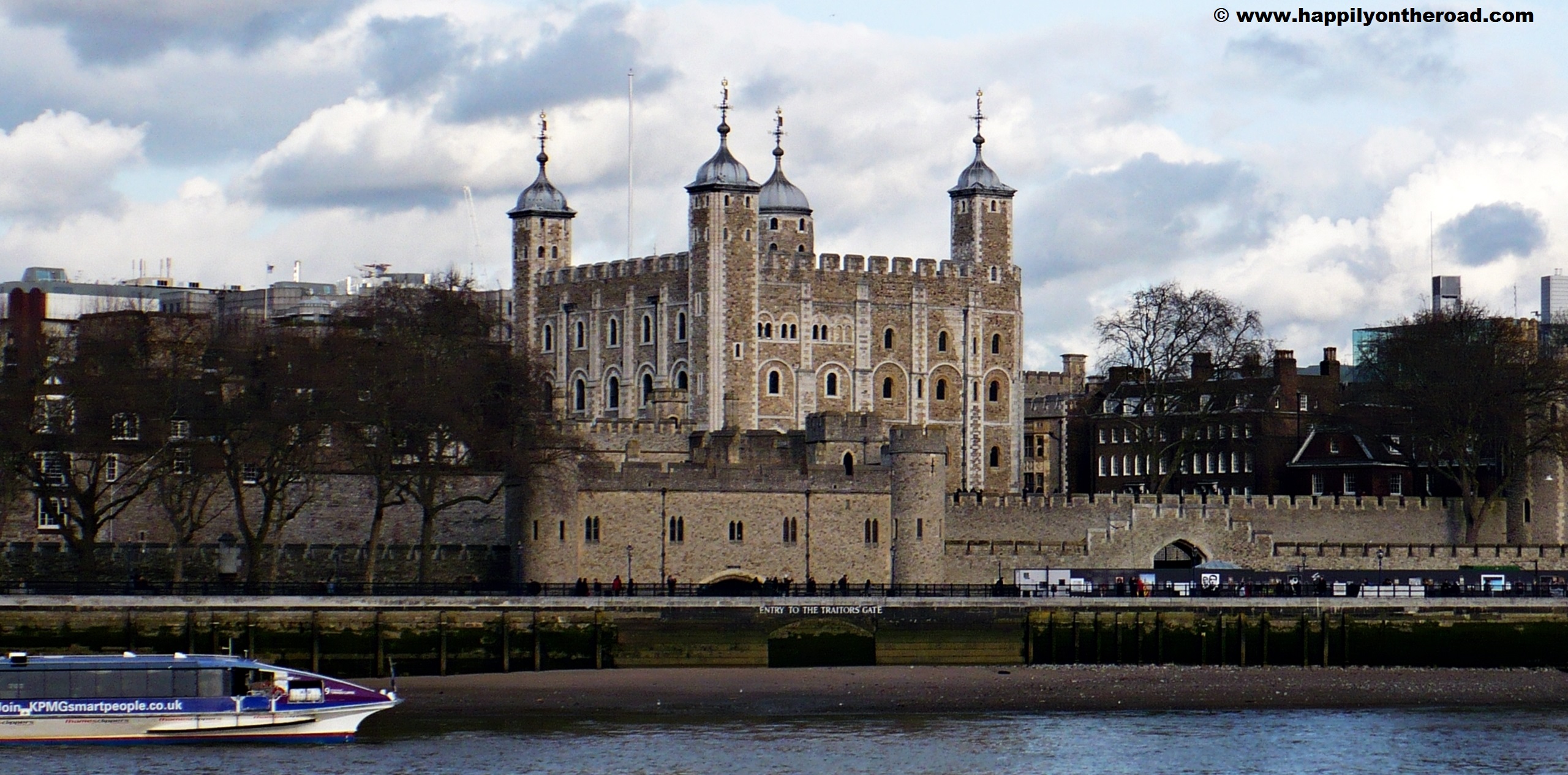
The Tower of London
Trafalgar Square and Piccadilly Circus
After a couple of hours of walk between the Tower of London and the Tower Bridge, I took the boat again to get back to Westminster. From there I walked the road that connects Westminster to Trafalgar Square, called Whitehall. Along these avenue there are the most important ministries and government institutions. For instance, we can find Downing Street, where the British Prime Minister resides at House 10; the Scotland Yard office; the Horse Guards, home of the cavalry; the Banqueting House, which served as banquet building of the old Whitehall Palace, which was razed to the ground in 1698. It was a very important building, because within its walls the marriage between Henry VIII and Anne Boleyn was celebrated, Henry himself died and also Oliver Cromwell and Elizabeth I lived.
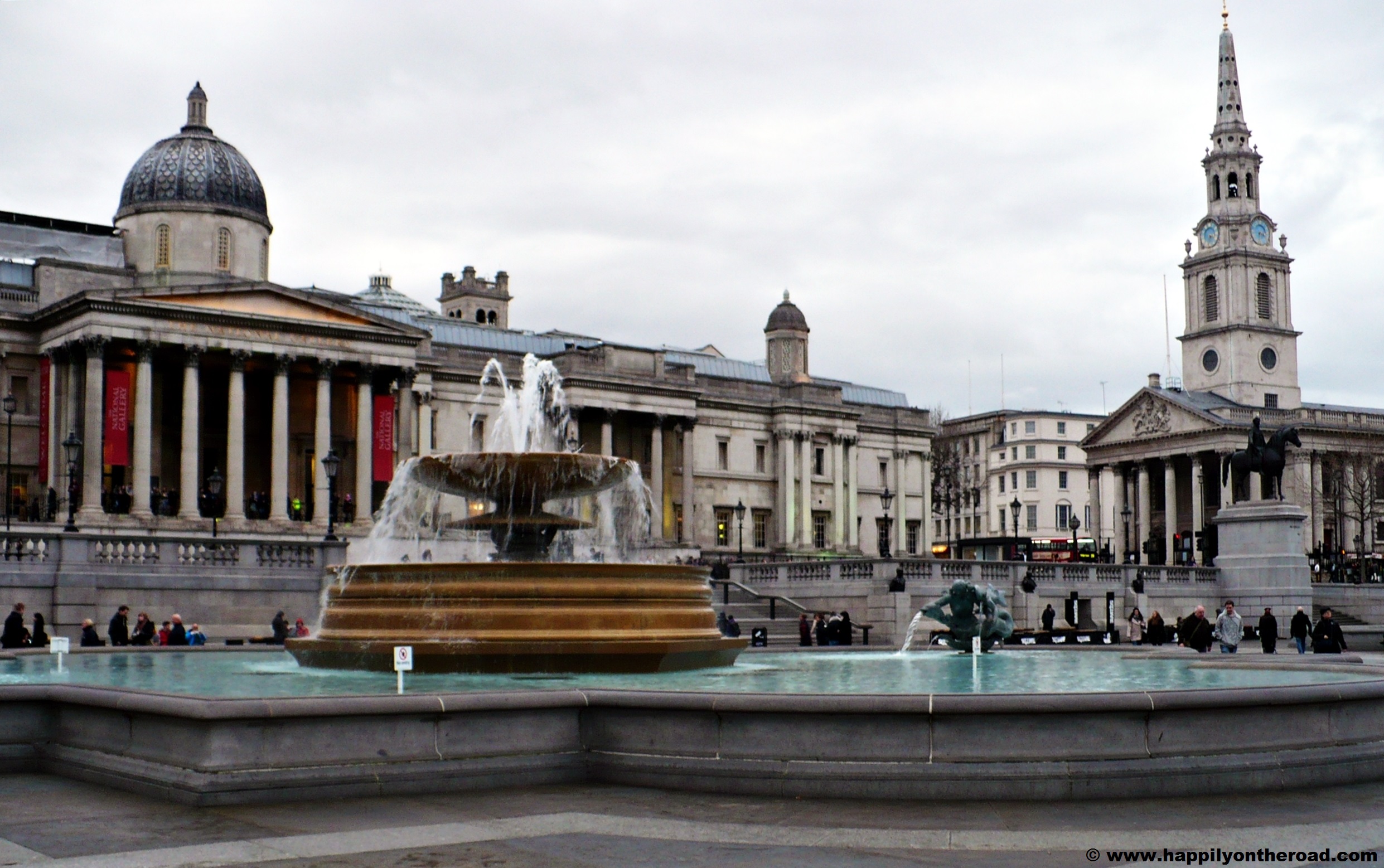
Trafalgar Square
At the end of Whitehall, I got to Trafalgar Square, one of the most beautiful squares in London, with its fountains and typical lions. At the centre of the square, you can see the Nelson’s Column. The most important attraction in Trafalgar Square is the National Gallery, one of the world’s greatest art galleries. It would have taken me some hours to visit it entirely. But, since the entry was for free, I decided to get in for some minutes.
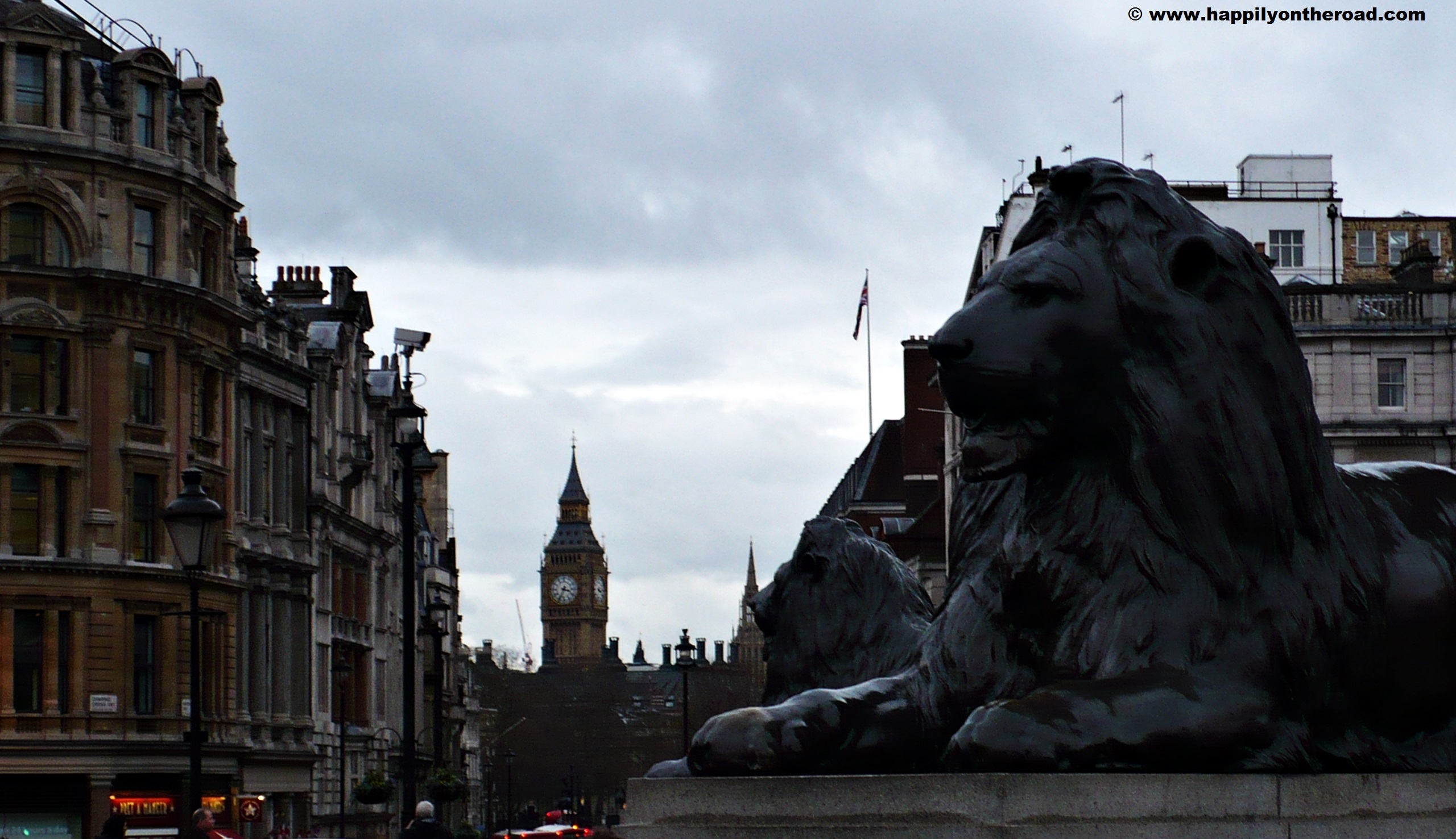
The lions of Trafalgar Square
As I left the National Gallery, I moved to Piccadilly Circus, one of the symbols of the Swinging London in the 1960s. Although it’s not a big square, it’s very chaotic and busy – not by chance the Londoners consider it the umbilicus of the world. In fact, there convey four main streets (Regent Street, Piccadilly, Haymarket e Shaftesbury Avanue) and three underground lines. The most characteristic features of this square are the billboard lights and the Eros Fountain, which according to some actually represents the angel of Charity.
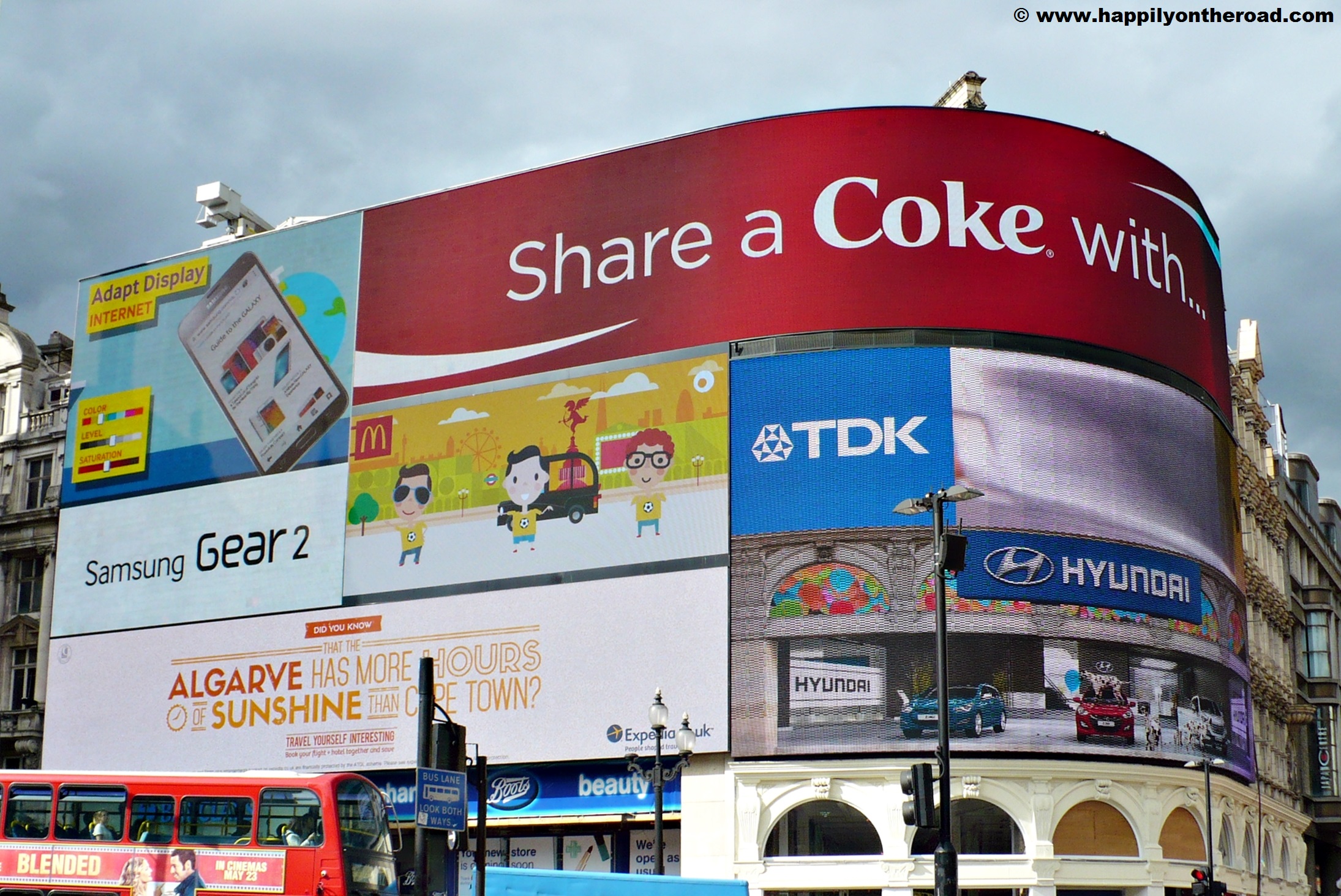
The billboard lights at Piccadilly Circus
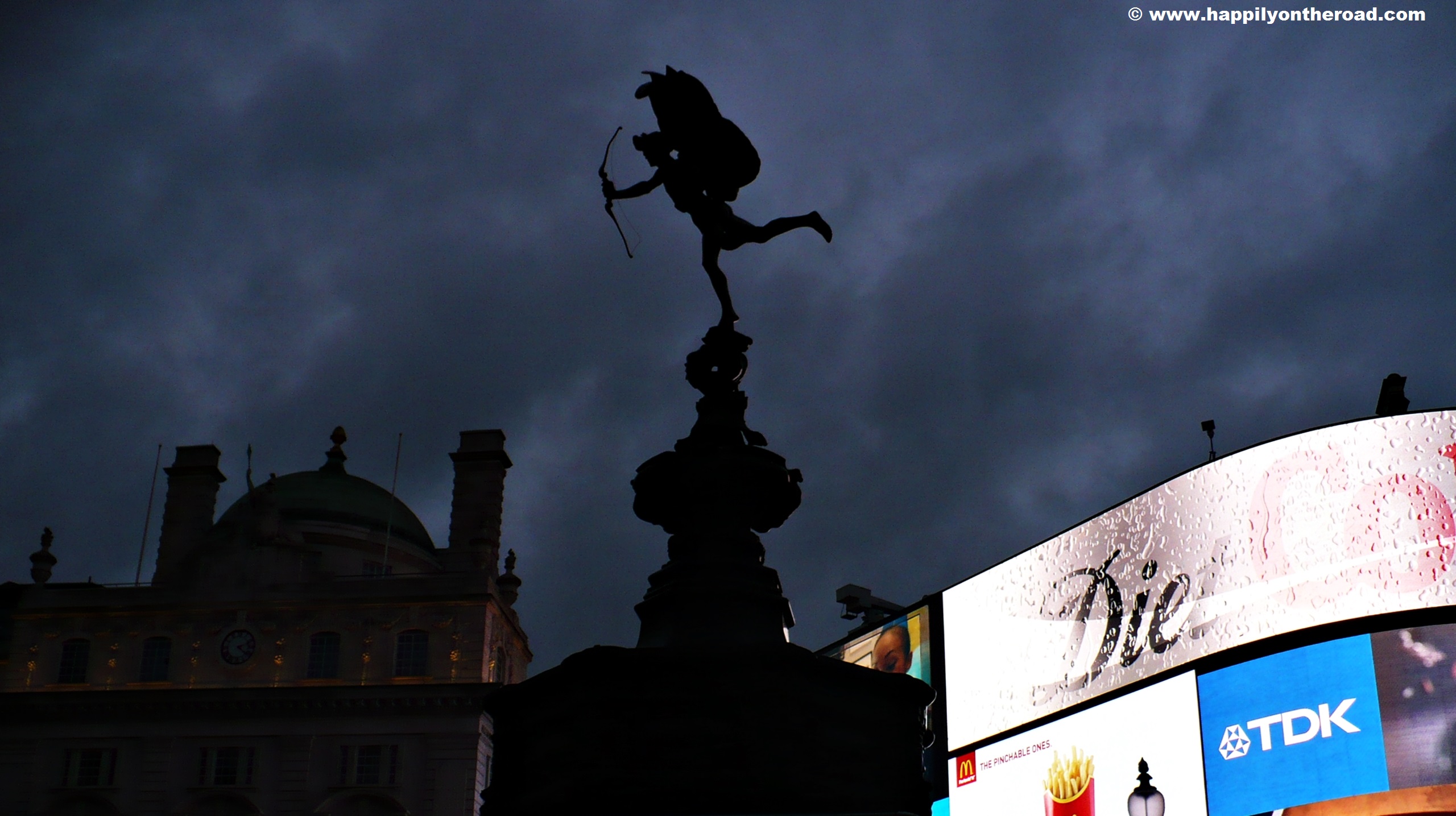
Eros Fountain
London shopping streets
From Piccadilly Circus, I started having a slower walk through London shopping streets. My intention wasn’t to buy anything, but just to take a tour. Regent Street, with its characteristic curve, was the first to be walked. Before getting to Oxford Circus – where Regent Street meets Oxford Street, the most famous shopping street in London – I diverted towards Carnaby Street.
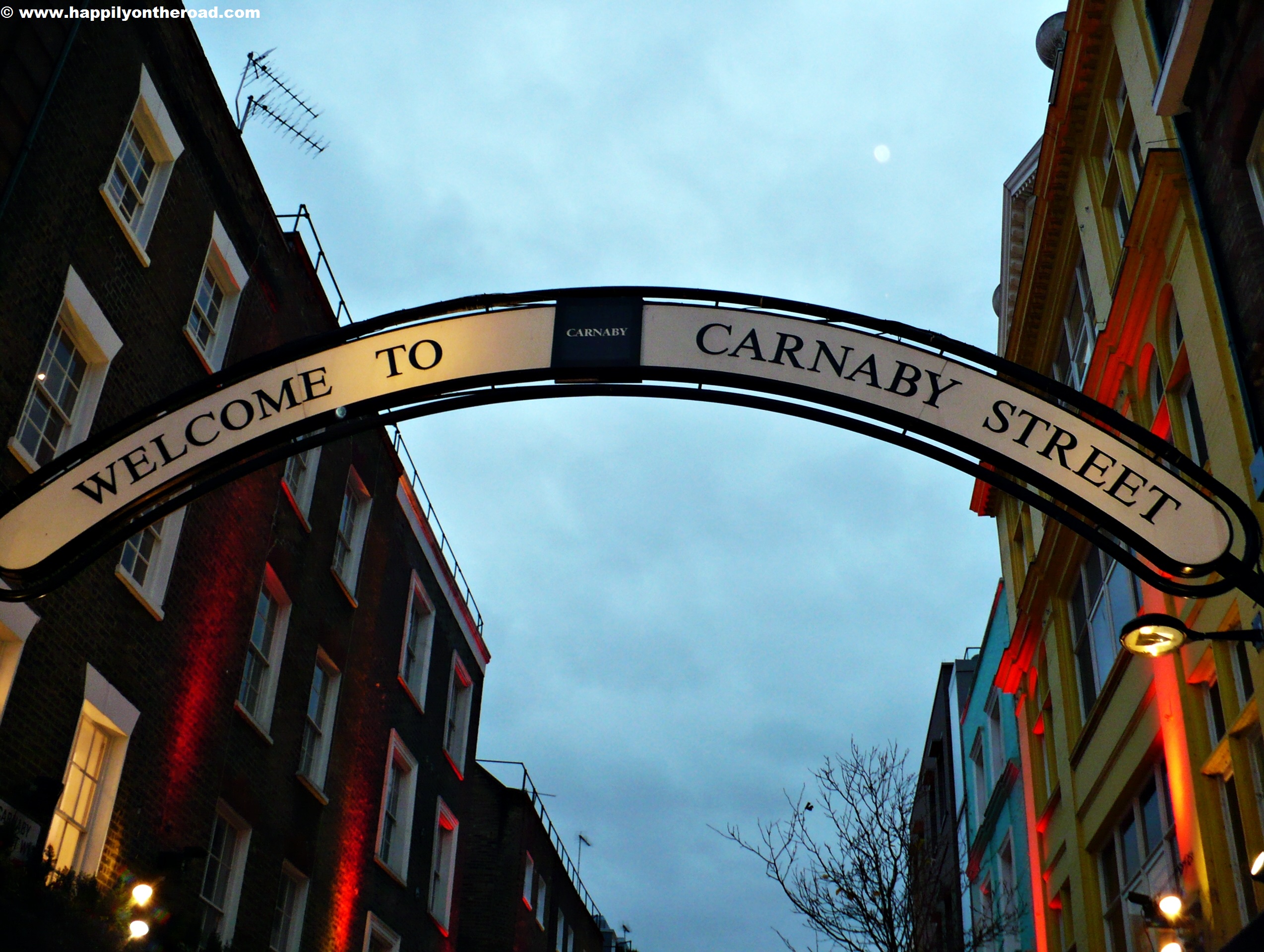
Carnaby Street
Once symbol of the Swinging London in the 1960s and meeting point of the hippy community, Carnaby Street is nowadays a pedestrian street, popular above all among tourists as a shopping street. During its golden age in the 1960s, there were some independent music shops and fashion boutiques. Right in this street, the designer and inventor of the miniskirt, Mary Quant, had her boutique.
Last stop of the itinerary of the first day in London was Oxford Street. It’s the longest commercial street of the city, with stores of all major store chains. To note, there is Selfridges, the second department store in Great Britain after Harrods.
In just a day I was able to see all the things I listed, following most of this itinerary on foot. In the next post, I’ll talk about the second trip day around the City and Notting Hill.
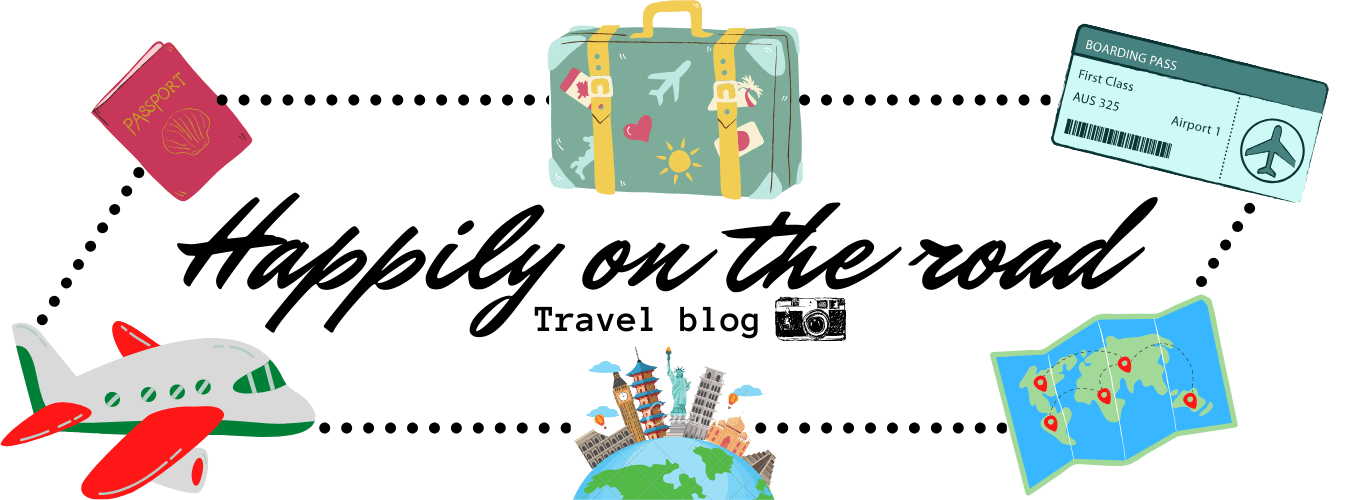
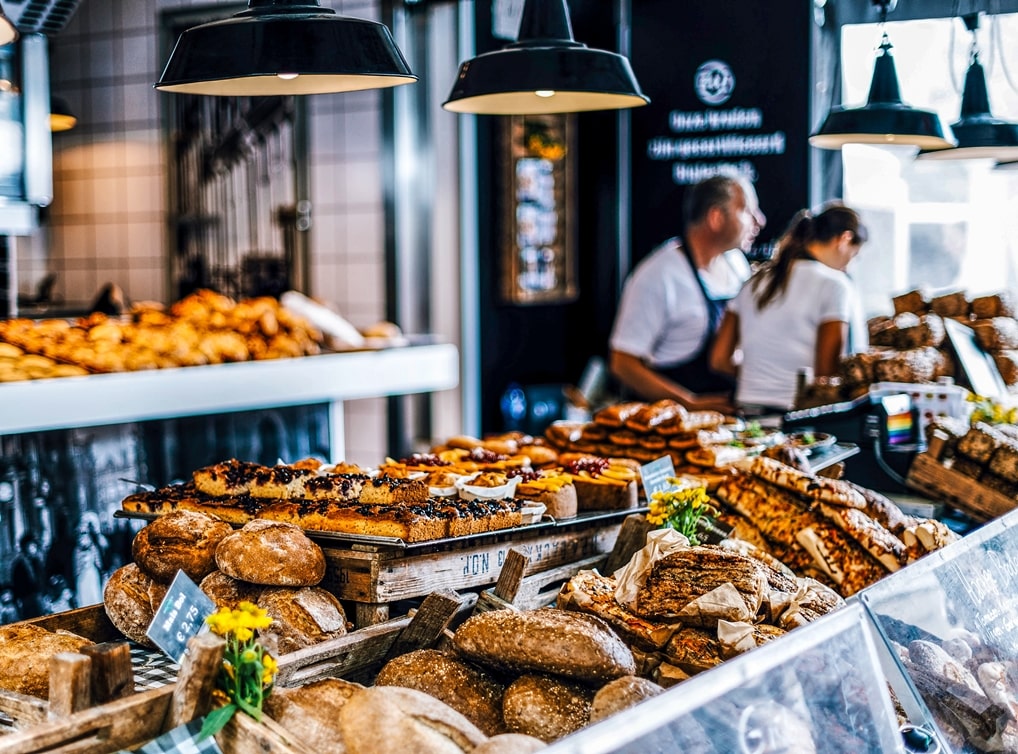
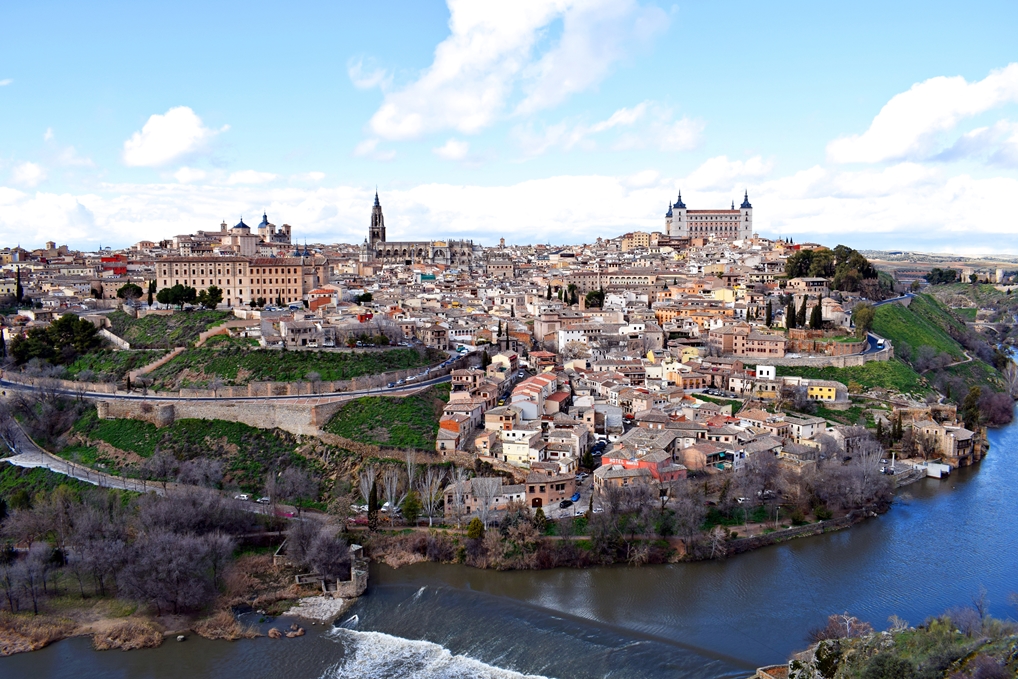
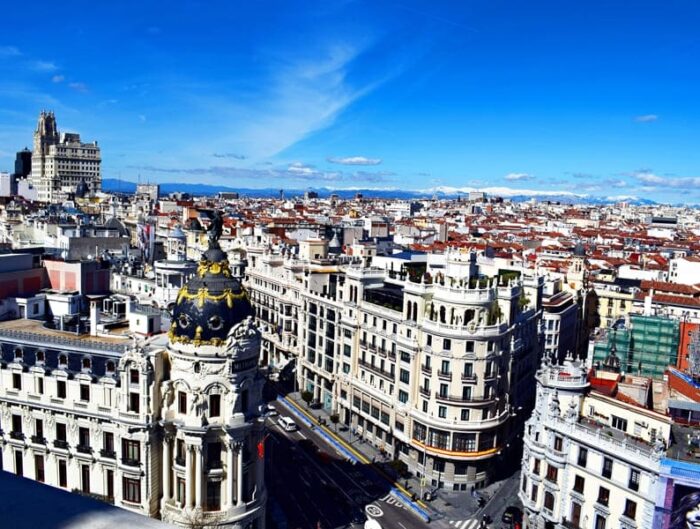
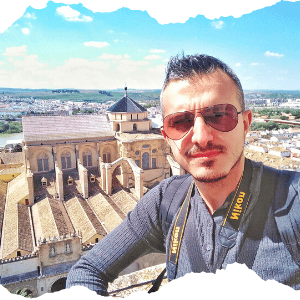

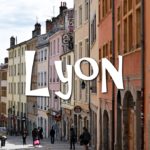
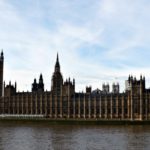
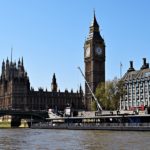



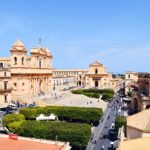
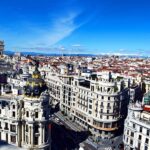
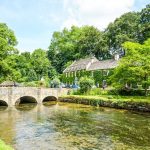
3 Comments
[…] doesn’t mean that I didn’t visit the classic attractions). Ah, I forgot: as in the first trip, I travelled alone. Here’s how I set the […]
[…] closer to each other and, alas, making some renunciations, you can see many things anyway. In the previous post, I talked about the first trip day in the marvelous London, describing the itinerary I followed on […]
[…] the next post, I’ll talk about the itinerary I followed to visit London in 2 days. In the meantime, after […]